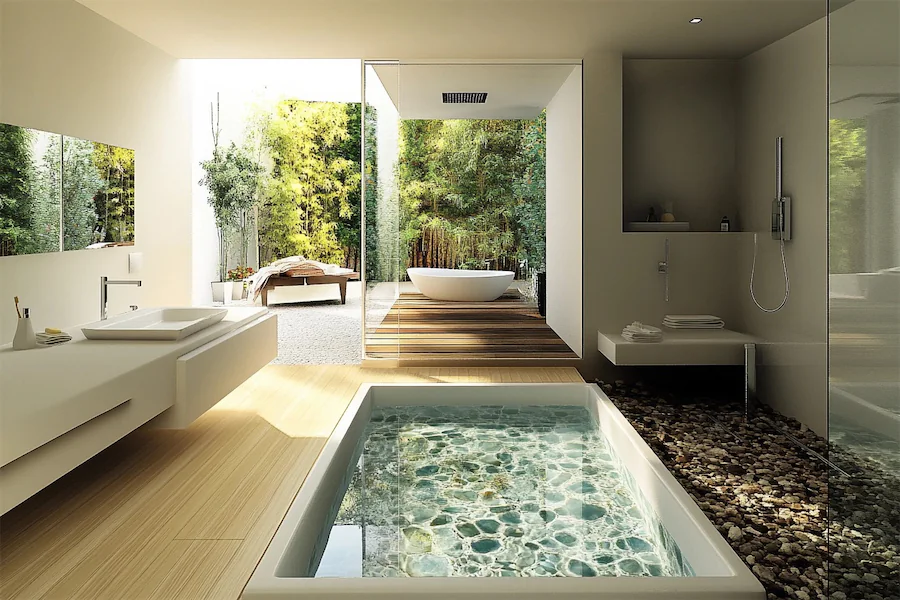Heated bathroom floors, also known as radiant floor heating, provide a luxurious and efficient solution to combat cold tiles, enhancing comfort and adding value to your home. This article explores the history, key features, applications, considerations, and concludes with insights into heated bathroom floors.
Introduction to Heated Bathroom Floors
Radiant floor heating involves installing a system beneath the bathroom floor that emits heat, warming the floor surface and subsequently the entire room. This method ensures uniform heat distribution, eliminating cold spots and enhancing overall comfort.
History and Origins of Heated Bathroom Floors
The concept of underfloor heating dates back to ancient civilizations. Early evidence suggests that Koreans utilized heated floors as far back as 5,000 BC, employing systems known as ‘ondol,’ meaning ‘warm stone.’ Similarly, the Romans developed the hypocaust system, which circulated hot air beneath floors to heat public baths and villas.
Key Features of Heated Bathroom Floors
- Uniform Heating: Radiant floor systems provide consistent warmth across the entire floor surface, eliminating cold spots commonly associated with traditional heating methods.
- Energy Efficiency: These systems operate at lower temperatures compared to conventional heating, leading to potential energy savings. Some sources suggest that heated bathroom floors can use up to 25% less energy than traditional HVAC units.
- Compatibility with Various Flooring Materials: Heated floors can be installed under materials like tile, stone, or vinyl, offering flexibility in bathroom design.
- Enhanced Comfort: Stepping onto a warm floor, especially during colder months, significantly enhances the bathroom experience.
Applications of Heated Bathroom Floors
- New Constructions and Renovations: Radiant floor heating can be incorporated into new builds or during bathroom remodels, providing an opportunity to upgrade comfort levels.
- Integration with Smart Home Systems: Modern heated floor systems can be connected to smart thermostats, allowing for programmable heating schedules and remote control.
Considerations When Installing Heated Bathroom Floors
- Installation Costs: The initial investment varies based on the system type and bathroom size. Electric heated floors for a small bathroom can range from $500 to $1,500, including materials and installation, while hydronic systems tend to be more expensive due to their complexity.
- Installation Time: Installing heated floors can be a time-consuming process, potentially extending the timeline of your bathroom remodel.
- Floor Height: The addition of heating elements may slightly raise the floor level, which should be considered during installation to ensure seamless transitions between rooms.
- Maintenance: While generally low-maintenance, it’s essential to ensure proper installation to prevent potential issues, such as system malfunctions or leaks in hydronic systems.
Conclusion
Heated bathroom floors offer a blend of comfort, efficiency, and luxury, transforming the bathroom experience. By understanding their history, features, applications, and installation considerations, homeowners can make informed decisions about incorporating radiant floor heating into their bathroom designs.
